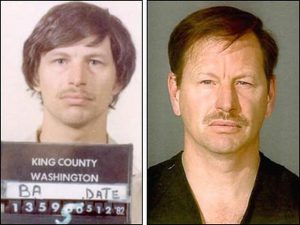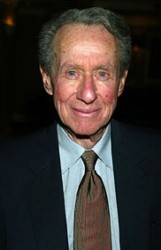Many people know of the Mexican holiday Día de Los Muertos, which is filled with vibrant colors and intricately painted faces. What many people don’t know is that this holiday originated over 3000 years ago with the Aztec empire. The Spanish Conquistadors first recorded a Día de Los Muertos celebration during the 16th century. When the Aztecs had begun this tradition, they weren’t remembering loved ones who passed, but they were worshiping the queen of the underworld and protector of the dead.1

This Aztec queen was Mictecacihuatl, “Lady of the Dead,” Queen of Mictlan.2 According to Aztec legend, Mictecacihuatl was sacrificed as an infant and placed in the underworld to become the wife of Miclantecuhtl, the king of the underworld. In the underworld, her role was to watch over the bones of past lives, which would be used to create new life in the living world. However, in order for the bones to be able to create new life, they needed to be stolen from Mictecacihuatl to be brought to the living world. As their protector, part of her own life would be carried with the stolen bones. Even after the bones were stolen, she would continue her duty to protect them by returning to the living world every year to make sure the bones were being properly taken care of. When the time came for her to return to the living world, the Aztecs celebrated Mictecacihuatl’s return with death festivals and traditional dances, to honor her for her protection of the bones that created life and to seek protection for those who died.3

The Aztecs celebrated Día de Los Muertos much differently than it is celebrated today due to the Spanish conquistadors and Catholicism. The Spanish changed the lives of the indigenous peoples wherever they went, from taking land for the Spanish throne to converting people to Catholicism. Many traditions changed, including those of Día de Los Muertos.4 The Aztecs laid out offerings for the King and Queen of the Underworld for the whole month of August, and the Spanish were the first outsiders to witness this honoring of Mictecacihuatl by the Aztecs. Not long after the Spanish exposure to this festival, the Spanish combined the Aztec tradition with Catholicism. Syncretism, the blending of Spanish and indigenous beliefs and practices, combined the Aztec traditions of Día de Los Muertos with the Spanish traditions of All Saint’s Day and All Souls Day.5 Some examples of syncretism between Catholicism and Día de Los Muertos are the symbols that are most recognizable with Día de Muertos, such as decorated skulls and skeletons, and the Spanish character “La Catrina,” who represents Mictecacihuatl.6 The merging of Catholicism with the Aztec religious beliefs began the evolution of how Día de Los Muertos, transforming how it is celebrated today.

Despite that the name Día de Los Muertos translates to Day of the Dead in English, the holiday is actually the celebration of life. Día de Los Muertos doesn’t focus on death and mourning of a loved one. It’s seen as a happy celebration where family members of all generations, deceased and alive, can be together as one. The traditions of this holiday have changed from honoring the queen of the underworld Mictecacihuatl to honoring those who have passed.7 It’s a time of colorful festivals and parades, beautifully painted colorful skulls, marigold flowers, decorated ofrendas, grave site visits and the smells of traditional Mexican foods and incense in the air. Although it is primarily celebrated in Mexico, some parts of the United States, especially cities and towns on the Mexican border, have adopted the tradition and celebrate the remembrance of their deceased loved ones.
- MasterFILE Complete, 2008, s.v. “Día de los Muertos, by Benjamin Perea. ↵
- Sin Jones, Mictecacihuatl, Santa Muerte, 2010, 1-16. ↵
- Sin Jones, Mictecacihuatl, Santa Muerte, 2010, 1-16. ↵
- Mark Lacy, Origins of El Día de Los Muertos: The Prehispanic Festival of the Dead Defies Cultural Invasions of Mexico, (History Institute for Culture), 1. ↵
- Mark Lacy, Origins of El Día de Los Muertos: The Prehispanic Festival of the Dead Defies Cultural Invasions of Mexico, (History Institute for Culture), 1. ↵
- Mark Lacy, Origins of El Día de Los Muertos: The Prehispanic Festival of the Dead Defies Cultural Invasions of Mexico, (History Institute for Culture), 1. ↵
- Christina Zarate, Día de Los Muertos, (Smithsonian National Museum of American History), 2-7. ↵



114 comments
Lyzette Flores
I had no idea that El Dia de Los Muertos was originally created to worship the queen of the underworld but it was nice to know. My entire family is really big on celebrating our loved ones who have passed away especially on this day. Just how the article stated we celebrate it not by mourning but by celebrating with Mexican food, colorful festivals, and personally we pray for our family members.
Aleea Costilla
Before reading this I never understood the historical meaning behind this holiday that is so prevalent in my Hispanic culture. Throughout the article you can an in-depth understanding of the holiday’s meaning and origin. The author thoroughly explains the way we celebrate the holiday compared to its literal meaning.
Stephanie Silvola
The day of the Dead is a huge celebration of life in Spanish culture. I am from Harlingen so it is quite close to the border of Mexico and every year when the holiday comes everyone is excited rather than sad. I have witnessed the celebration and it is the most beautiful sight that I can think of. The writer was on point with how the holiday is not to mourn but to rejoice with passed loved ones with food, lights, flowers, and music.
Hailey Stewart
Cultural legends, traditions, and the changing of those stories over time always make for an intriguing narrative. I have been a witness to many Día de Los Muertos festivals, however, I did not know the full reason behind these “death festivals.” I like the way the author of this article explained the traditions as a celebration of life, in contrast to the literal English translation.
Sofia Andrade
I grew up celebrating El Dia de Los Muertos and was aware of the history of the adapted Dia de Los Muertos that is celebrated today. It was amusing to know the true origins and celebration of El Dia de Los Muertos. After reading this article I am now well aware of the evolution of this holiday, and know that this holiday is very different to how it originated.
Lorenzo Rivera
I find this article scandalous seeing how the Spaniards took over the Aztecs culture. It is also astounding to see this “holiday” recognize how long this altered tradition has lived on through out a group of people. I do love the note the author added about Dia De Los Muertos, it is about celebrating the living with the dead as one family.
Maisie Favila
Dia De Los Muertos is something that is celebrated by my family, but I never truly knew why it was. After reading this article I am now aware of the holiday’s origins. It’s cool to see all the different traditions we went through as a culture and where it ended up. Learning about the Aztec’s was also interesting because I didn’t know it tied along with the celebration. Overall, this article was very interesting to read and well written.
Miguel Rivera
After my movie was made (Coco) I kept thinking what the true meaning or origins of the celebration were. It’s amazing to see that it was about the celebration of a sacrificed infant that the Aztecs worshipped, which was then combined with Catholicism. I have only seen the celebrations in San Diego and the Rio Grande Valley, but hopefully one day I would be able to go to Mexico and see how they celebrate over there. Death happens to everybody, but the legacy and the influence our loved ones leave should be celebrated and also have an opportunity to live on.
Kathyleen Lauriano
I have grown up celebrating Dia De Los Muertos and I love it. My grandmother would tell us stories about what the day meant. We would decorate skulls and paint our faces on this day. Its a day to embrace life and live for those who cant. You celebrate their memories and moments you shared. This article was very well written and interesting to read, good job.
Maggie Amador
I love Dia de Los Muertos and celebrate it every year with my family, but I was never aware of its Aztec origins. It is amazing how much the Spanish conquest and conversion of many to Catholicism can have on a holiday. I love what the holiday stands for and while it has changed there still is the idea of leaving an offering to the dead.